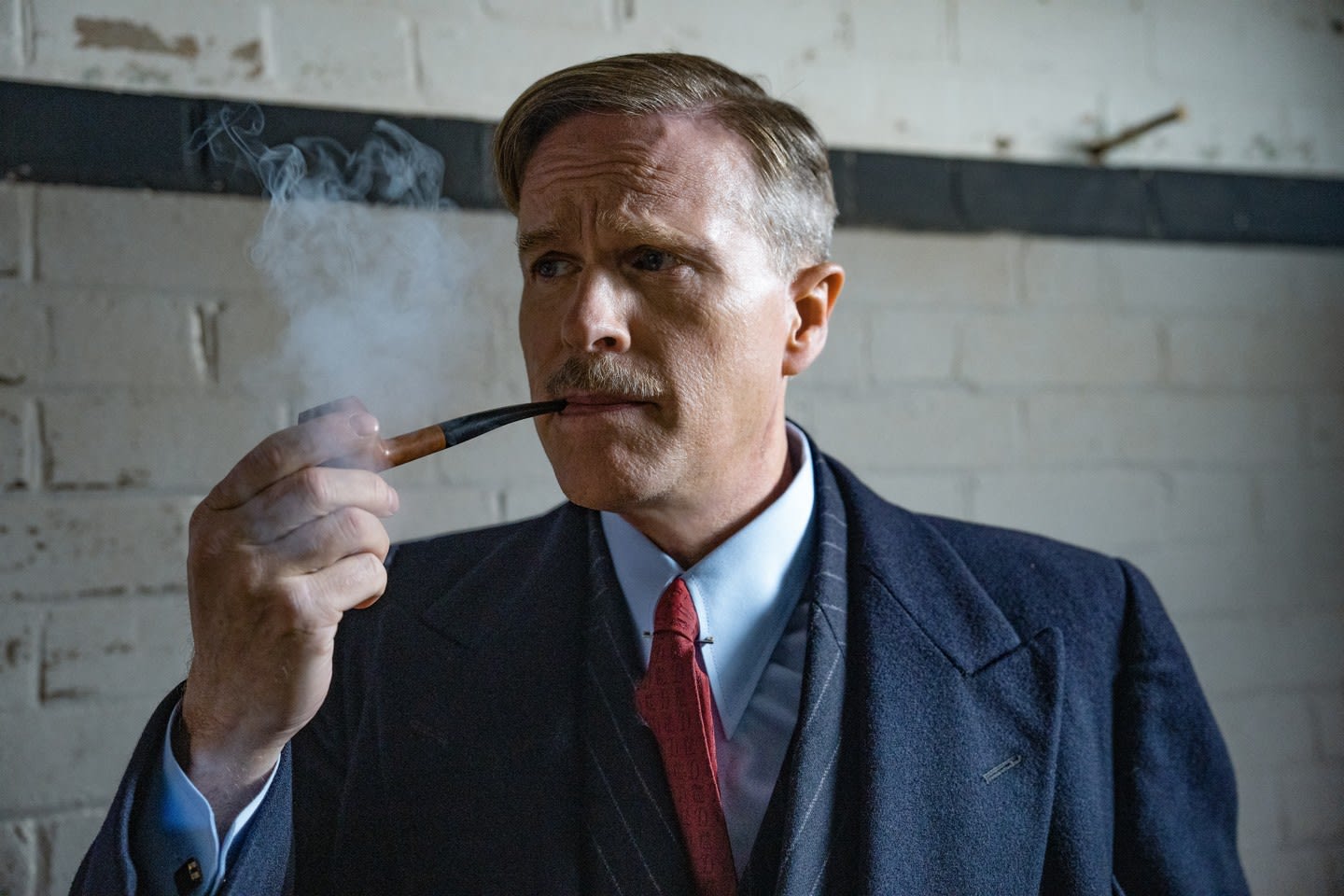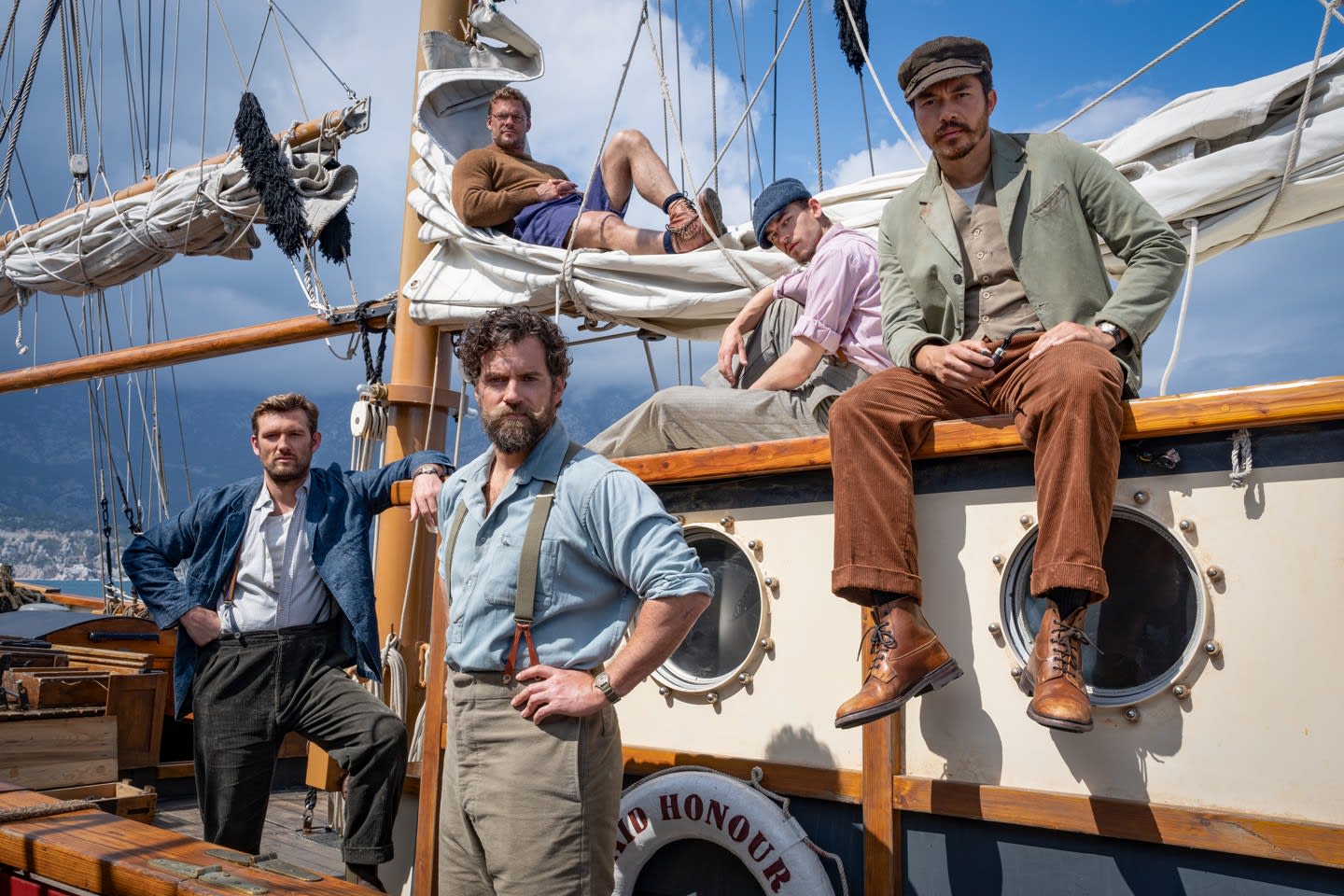Guy Ritchie’s The Ministry of Ungentlemanly Warfare is about to hit theaters, and if you’ve paid attention to the trailers, you may have noticed it’s based on a true story. Still, movies that tout themselves to be based on a true story sometimes really stretch the limits of the word “true,” with the events that unfold in the movie only resembling the real events in the loosest sense.
In it, Cary Elwes’ Brigadier Gubbins’ “M” taps Henry Cavill’s Gus March-Phillips to recruit a team of unlikely special soldiers to go undercover and sabotage various Nazi operations and strongholds during WWII. Clearly, the zany, comedic tone of the movie is a far cry from real life. But, while some liberties have definitely been taken with the historical events, quite a bit of the movie is rooted in reality. Here’s what to know about the true story behind The Ministry of Ungentlemanly Warfare.
Ian Fleming Was Involved – Yes, THAT Ian Fleming

You may have noticed above that Cary Elwes’ character is named “M.” That’s not a coincidence: Ian Fleming plays a part. The Ministry of Ungentlemanly Warfare is based on the WWII British operation, Operation Postmaster. Future James Bond creator Ian Fleming was a high-ranking member of Britain’s Naval Intelligence Division during WWII. He was used as a liaison and intelligence officer between the NID and other departments, particularly the Special Operations Executive, a special spy-ops department formed by Winston Churchill with the express role of infiltrating and disrupting Nazi operations around Europe.
Thanks to this, Fleming was intimately involved with the planning and coordinating of Operation Postmaster, the operation shown in the movie – in fact, Fleming appears in the movie portrayed by Freddie Fox. Later, Fleming would pull from his time as a British intelligence officer to inspire and ground the stories of James Bond – Operation Goldeneye, for example, was a real Allied operation during the war. It was Fleming who was in charge of that operation. Not only was Fleming instrumental in helping to form Britain’s intelligence operations, he also traveled to Washington and helped write the foundation for the department that became the Office of Strategic Services, which later became known as the CIA.
Operation Postmaster Was Seen As A Bad Idea By Many

Operation Postmaster was a naval operation (hence much of the trailer taking place in boats and on water). The plan was for agents of the SOE and SSRF (Smal Scale Raiding Force) to travel to the island of Fernando Po in the Gulf of Guinea, where they would steal the Italian and German ships and then sail them to Lagos. The British commander of the region initially forbade any support of the raid, fearing it would violate their agreement to honor Spain’s neutrality. The SOE went over the commander’s head and got express permission to carry out the operation.
Later, after the operation was conducted successfully, the Spanish government was incensed about the attack being carried out on their territory. The German government also angrily accused the Brits of the operation, something that the British government denied. However, the agent in charge of the Africa station of the SOE drily commented in his report to SOE head, Gubbins, that “perhaps next time it will not be necessary for prolonged negotiations before undertaking a 30-minute operation.” Winston Churchill’s own government minister overseeing the SEO opined that “other neutral governments would be impressed that Britain would if needed disregard the legal formalities of war in their efforts to succeed.”
Henry Cavill’s Character Really Existed (& So Did Most Of The Others)

Cary Elwes’ Gubbins and Henry Cavill’s Guy March-Phillips were real people: as previously noted, Gubbins brought together the team and oversaw them as the head of the SOE, while March-Phillips, who was later killed during Operation Aquatint, led the operation. However, the other characters in The Ministry of Ungentlemanly Warfare also really existed. Alan Ritchson’s Anders Lassen was the only sailor involved in the raid, and was the first to board the Italian vessel Duchessa d’Aosta. For his efforts, he was given a field commission and the Military Cross. Later, after he joined the Special Air Service, he was posthumously awarded a Victoria Cross after being killed in Italy in 1945.
Alex Pettyfer’s Geoffrey Appleyard was March-Phillips’ second-in-command and sailed his own separate crew to rendezvous with the rest before the mission. For his actions, he was awarded a bar on his Military Cross. He later joined the Special Air Service, but his plane went missing on a mission and Appleyard was presumed dead.
Hero Fiennes Tiffin’s Henry Hayes – Graham Hayes in reality – helped train the raiders how to board, sail, and navigate ships, as none other than Lassen had any naval experience. Hayes was also awarded the Military Cross. Later, during the September 1942 mission of Operation Aquatint, Hayes was captured by German soldiers and kept a POW of the Nazis until being executed by firing squad in 1943.
Eiza González’s Majorie Stewart was also a real person – in fact, she was the future wife of Gus March-Phillips, though they weren’t married at the time of Operation Postmaster. That said, she may have been involved with the operation in some way as a liaison or doing undercover civilian work with the SOE; the historical records aren’t clear.
Get tickets to The Ministry of Ungentlemanly Warfare













